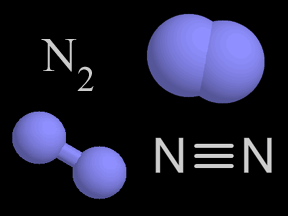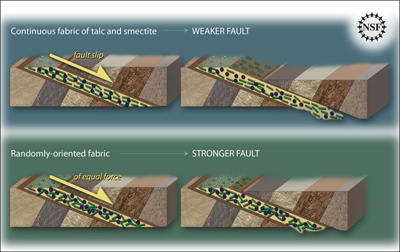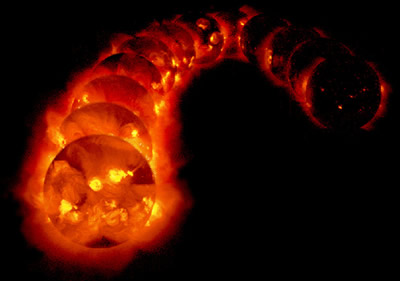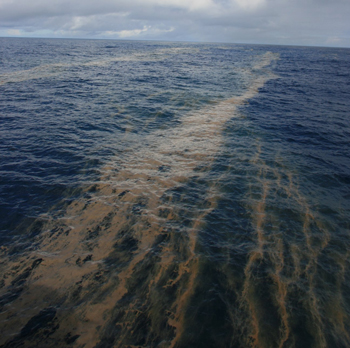Surface accumulation of the nitrogen-fixing microbe Trichodesmium in the South Pacific Ocean.
Click on image for full size
Courtesy of Pia Moisander
More than One: Long-Reining Microbe Controlling Ocean Nitrogen Shares the Throne
Scientists have been taking a close look at microbes that live in the ocean. The microbes they are studying are a type of bacteria and are very tiny. They may be small but they have a big impact on life in the sea!
The little round bacteria are able to take nitrogen gas out of the air and change it into a different type of nitrogen. They change it into a nutritious type of nitrogen that other living things need.
Plants and algae in the ocean need the nutritious nitrogen. These plants and algae are the start of food chains that include almost all life in the sea. Because the bacteria can change nitrogen from the air into a type that plants and algae can use, they are very important for marine ecosystems.
These special bacteria live in certain environments. Some live in warm water while others prefer cool water. Since these bacteria live only in certain places in the ocean, nitrogen moves through the nitrogen cycle differently in different places.
Last modified May 21, 2010 by Lisa Gardiner.
You might also be interested in:

Each Eubacteria is a tiny prokaryotic cell. Some can make food from sunlight through photosynthesis. Cyanobacteria, also called blue-green algae, are able to do this. They have been living in the oceans
...more
There is more nitrogen gas in the air than any other kind of gas. About four out of five of the molecules in Earth's atmosphere is nitrogen gas! A molecule of nitrogen gas is made up of two nitrogen atoms.
...more
Kingdom Plantae has almost 300,000 different kinds of plants. Plants are found all over planet Earth. They can live in fields, in swamps, in oceans and in the desert. They can live where it is hot and
...more
Scientists have learned that Mount Hood, Oregon's tallest mountain, has erupted in the past due to the mixing of two different types of magma. Adam Kent, a geologist at Oregon State University, says this
...more
The Earth's mantle is a rocky, solid shell that is between the Earth's crust and the outer core. The mantle is made up of many different reservoirs that have different chemical compositions. Scientists
...more
Some faults look strong and like they wouldn’t cause an earthquake. But it turns out that they can slip and slide like weak faults causing earthquakes. Scientists have been looking at one of these faults
...more
The sun goes through cycles that last approximately 11 years. These solar cycle include phases with more magnetic activity, sunspots, and solar flares. They also include phases with less activity. The
...more















